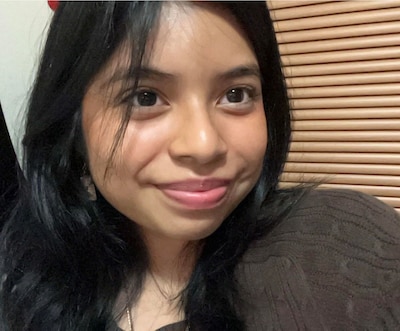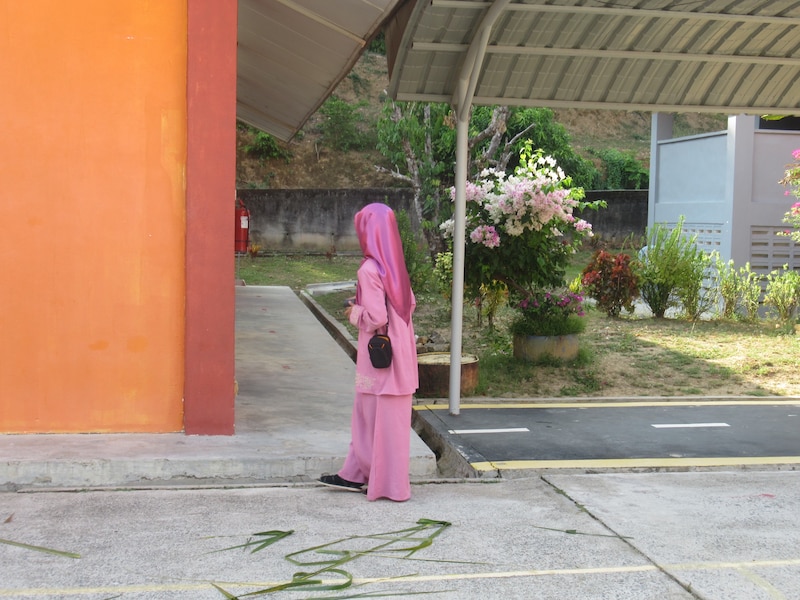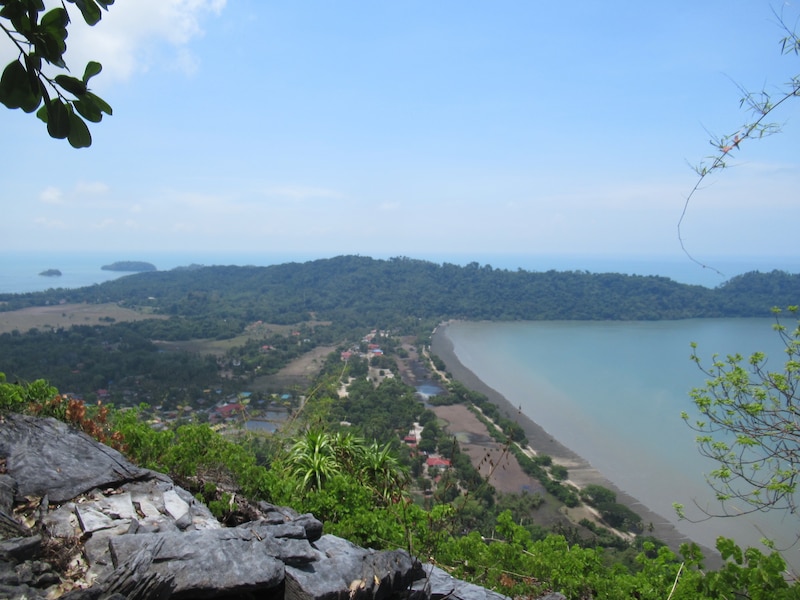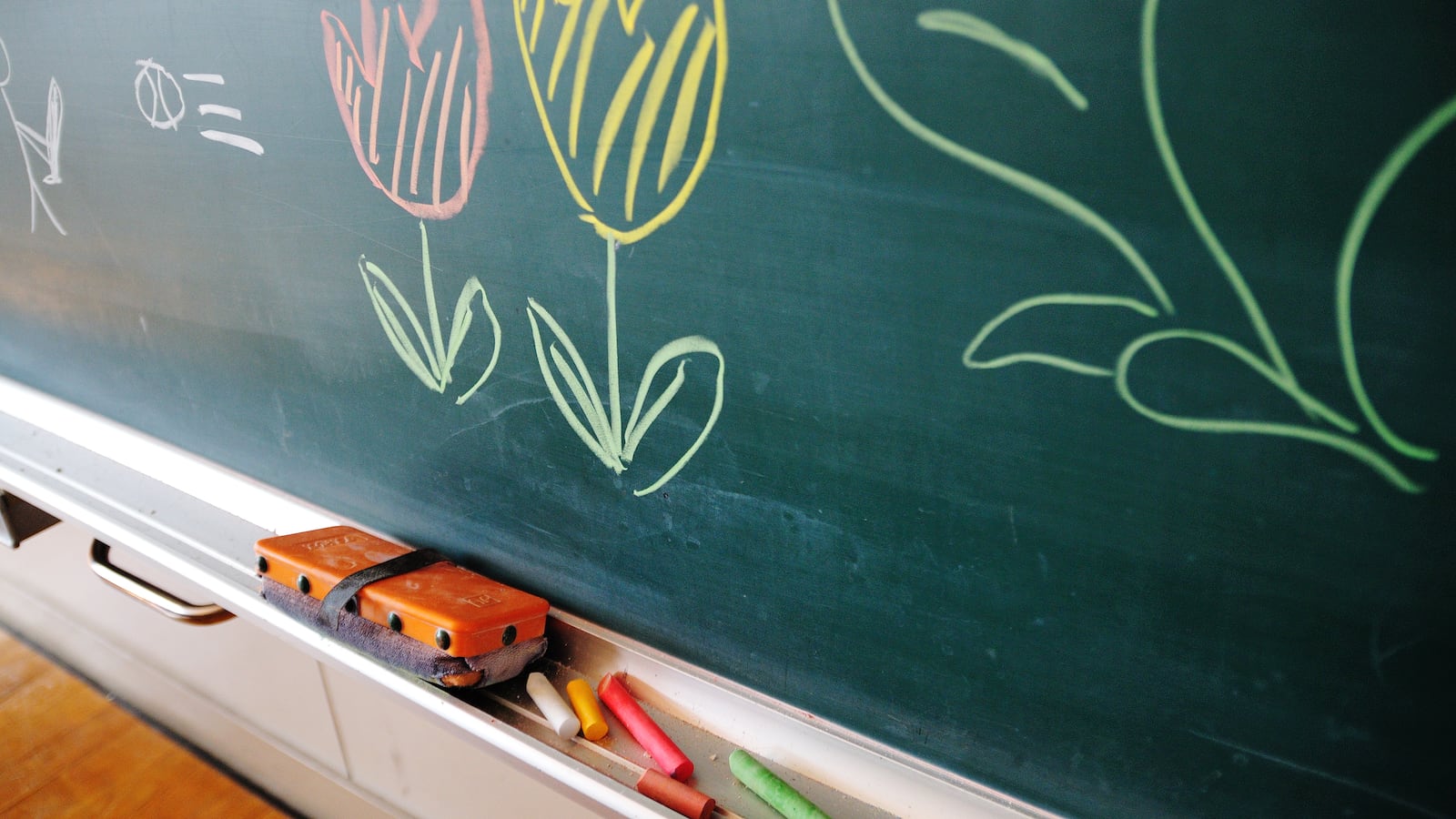In almost 100-degree heat, the courtyard at the Sekolah Kebangsaan Pulau Tuba school in Malaysia was packed with children. Laughter and cheers filled the air.
My first hour as a teacher was spent playing patty cake and rock, paper, scissors with the students. Other students were playfully arm-wrestling with their new teachers. We didn’t speak the same language or share the same culture, but some games transcend those barriers.
To get here, I flew with a small group of my high school classmates and teachers for 13 hours from New York City to Dubai. Outside the airplane’s window, we could see the epic storm that turned our 12-hour layover into 24 hours. Once the airport was up and running again, we took another two flights to Penang and then a boat ride to the island of Pulau Tuba. That is where we would be for the next 18 days.

I attend the Institute for Collaborative Education in Manhattan, and as part of its Youth Arts, Writing, and Photography Program, or YAWPP, I traveled more than 9,000 miles from home, to teach English and photography to fifth and sixth graders.
I first heard about the program during my junior year, and the opportunity to experience a culture different from my own intrigued me. This, along with the fact that no one in my family had traveled across the world before, convinced me to take advantage of this opportunity.
The first official day on the island was an adjustment period before we jumped into teaching mode the next day. The morning of our first day of teaching, everyone was full of nerves, despite having spent almost two hours the night before going over our lesson plans. I remember double- and triple-checking that everything was in my bag. I worried about whether my students were going to like the lessons and how the language barrier would impact things.
I had spent the past 13 years learning — mostly, sitting at a desk and taking notes. The shift to teaching was going to be interesting.
On the car ride to the school, we sat quietly taking in the scenery — small houses with clothes hanging in the breeze and dozens of cats wandering along the dirt road. Once at the school, I knew that other than the few translators provided, we would have to rely on body language and photography to communicate. I knew the task at hand would be difficult, but I didn’t think it would be that difficult.
It started off easy enough in that courtyard. After about an hour, we were split into our teaching groups. I was grouped with two other students from my high school, Addy and Theo, and we were assigned a total of six students, ages 10 and 11 — five boys and one girl.
We began by creating name tags and making folded paper “fortune tellers,” with “getting to know you” questions. I had anticipated an instant connection with my students, but it was harder than I expected to get each student comfortable with us. Each time one started to come out of their shell, another one would retreat.

By snack time, I felt drained. For each student whose energy level was at 30%, we had to be at 170%. Once the kids left the very humid orange classroom, I sat in front of the fan, soaking in the air in my face for the 15-minute recess and prayer break.
Attempting to break the ice, we brought the students to a shady area outside and took turns screaming at the top of our lungs. The kids thought it was silly, but after a couple of tries, they finally found their voices. Later that day, sitting around a whiteboard, we decided we should all be louder and more confident in our voices. That was how our class name came to be: the Fearless Phoenixes.
The connection wasn’t instant like I thought it would be, but as the days flew by, students got more comfortable with us. Teaching was still exhausting, but the exhaustion started to feel worth it. We learned about the students as individuals, what’s important to them, and the hobbies they enjoy. And the best part about it was that most of this was done through photography.
Our first photo walk around the campus was a testament to this. I remember their giddy smiles and fidgety fingers when we handed them their cameras. The students began clicking away. Some saw the beauty in flowers and trees, while others trained their cameras on the people around them. I’d be surprised if there was a single thing at their school that went unphotographed by the end of our stay.
During one of the lessons, we had students make a collage out of magazine images, filled with things they loved. Looking at their colorful displays, their stories and quirks were revealed. Many of them loved sports. Through his collage, one little boy whom I’ll call W. showed us his love for rugby. R. really liked dinosaurs, filling both sides of his page with National Geographic pictures. In bits and pieces, we created connections with students that I will cherish.

The 10 days we spent teaching weren’t easy. Each little photographer had different needs. Some learned better with visuals, some couldn’t stay still for more than 30 minutes at a time, and some knew a bit of English while others knew none at all. (None of us spoke Malay.)
There was not one day when we actually stuck to the plan we spent hours developing and debating. Two of the main things I learned while teaching were that it is essential to collaborate and adapt in real time. Our agenda for the day was likely to shift depending on factors such as the mood of our students and the health of teachers.
Midway through our trip, more than half of our group fell victim to food poisoning. As a result, I was assigned to teach a completely different group of students by myself while those who had fallen sick recovered. This was a pivotal point in my trip, when I saw first-hand the importance of being adaptable and being able to depend on your fellow teachers.
The students also showed themselves to be adaptable. They not only opened up their school to a group of strangers but also took in our lessons thoughtfully and with care. While the three of us teachers provided the lessons, it was the students, and their creativity that lived up to the “Fearless Phoenixes” name.
Our last day of teaching was a lot like the first. Emotions were running high, and everyone was silent on the car ride to campus. Only this time, we carried so many memories from our weeks together and with our students. When it was time to say goodbye, as we took even more photos and exchanged gifts, tears came easily to my eyes. It was a bittersweet moment. I looked around at the students’ work on display in the courtyard, knowing we would be leaving this place that had quickly become a home away from home.
Miriam Galicia is a senior at The Institute For Collaborative Education and is a 2023-24 Chalkbeat Student Voices fellow. In the fall she will attend Skidmore College. As a soon-to-be first-generation college student, she values the opportunity to pursue higher education not afforded to previous generations of her family.


